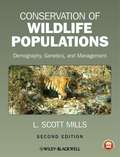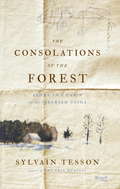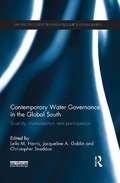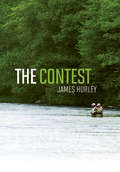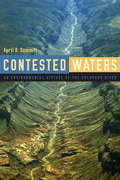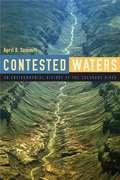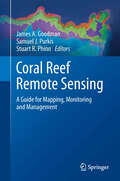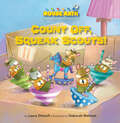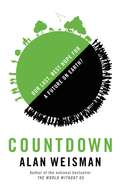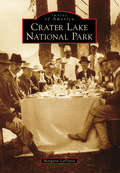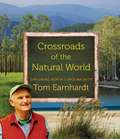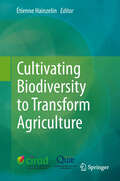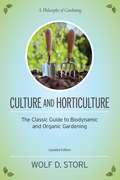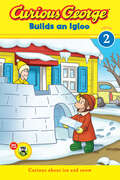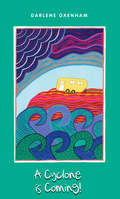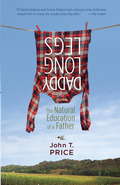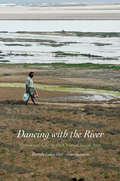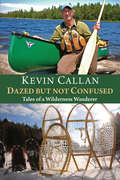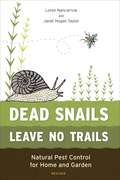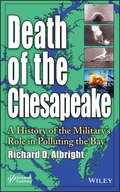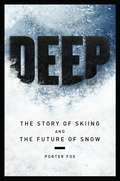- Table View
- List View
Conservation of Wildlife Populations: Demography, Genetics, and Management
by L. Scott MillsPopulation ecology has matured to a sophisticated science with astonishing potential for contributing solutions to wildlife conservation and management challenges. And yet, much of the applied power of wildlife population ecology remains untapped because its broad sweep across disparate subfields has been isolated in specialized texts. In this book, L. Scott Mills covers the full spectrum of applied wildlife population ecology, including genomic tools for non-invasive genetic sampling, predation, population projections, climate change and invasive species, harvest modeling, viability analysis, focal species concepts, and analyses of connectivity in fragmented landscapes. With a readable style, analytical rigor, and hundreds of examples drawn from around the world, "Conservation of Wildlife Populations (2nd ed)" provides the conceptual basis for applying population ecology to wildlife conservation decision-making. Although targeting primarily undergraduates and beginning graduate students with some basic training in basic ecology and statistics (in majors that could include wildlife biology, conservation biology, ecology, environmental studies, and biology), the book will also be useful for practitioners in the field who want to find - in one place and with plenty of applied examples - the latest advances in the genetic and demographic aspects of population ecology. Additional resources for this book can be found at: www.wiley.com/gomillswildlifepopulations.
The Consolations of the Forest
by Sylvain Tesson Linda CoverdaleA meditation on escaping the chaos of modern life and rediscovering the luxury of solitude. Winner of the Prix Médicis for nonfiction, The Consolations of the Forest is a Thoreau-esque quest to find solace, taken to the extreme. No stranger to inhospitable places, Sylvain Tesson exiles himself to a wooden cabin on Siberia's Lake Baikal, a full day's hike from any "neighbor," with his thoughts, his books, a couple of dogs, and many bottles of vodka for company. Writing from February to July, he shares his deep appreciation for the harsh but beautiful land, the resilient men and women who populate it, and the bizarre and tragic history that has given Siberia an almost mythological place in the imagination. Rich with observation, introspection, and the good humor necessary to laugh at his own folly, Tesson's memoir is about the ultimate freedom of owning your own time. Only in the hands of a gifted storyteller can an experiment in isolation become an exceptional adventure accessible to all. By recording his impressions in the face of silence, his struggles in a hostile environment, his hopes, doubts, and moments of pure joy in communion with nature, Tesson makes a decidedly out-of-the-ordinary experience relatable. The awe and joy are contagious, and one comes away with the comforting knowledge that "as long as there is a cabin deep in the woods, nothing is completely lost."
Contemporary Water Governance in the Global South: Scarcity, Marketization and Participation (Earthscan Studies in Water Resource Management)
by Leila M. Harris, Jacqueline A. Goldin and Christopher SneddonThe litany of alarming observations about water use and misuse is now familiar—over a billion people without access to safe drinking water; almost every major river dammed and diverted; increasing conflicts over the delivery of water in urban areas; continuing threats to water quality from agricultural inputs and industrial wastes; and the increasing variability of climate, including threats of severe droughts and flooding across locales and regions. These issues present tremendous challenges for water governance. This book focuses on three major concepts and approaches that have gained currency in policy and governance circles, both globally and regionally—scarcity and crisis, marketization and privatization, and participation. It provides a historical and contextual overview of each of these ideas as they have emerged in global and regional policy and governance circles and pairs these with in-depth case studies that examine manifestations and contestations of water governance internationally. The book interrogates ideas of water crisis and scarcity in the context of bio-physical, political, social and environmental landscapes to better understand how ideas and practices linked to scarcity and crisis take hold, and become entrenched in policy and practice. The book also investigates ideas of marketization and privatization, increasingly prominent features of water governance throughout the global South, with particular attention to the varied implementation and effects of these governance practices. The final section of the volume analyzes participatory water governance, querying the disconnects between global discourses and local realities, particularly as they intersect with the other themes of interest to the volume. Promoting a view of changing water governance that links across these themes and in relation to contemporary realities, the book is invaluable for students, researchers, advocates, and policy makers interested in water governance challenges facing the developing world.
The Contest
by James Hurley"The only constant passion in my life was my love of fly fishing and all that went with it. I coveted the escape I could find sitting at my vise for hours, tying deceitful little flies. I loved to be in the world where trout lived--the rivers and mountains and forests and meadows, away from people and the demands and requirements that created stress in my life."Meet Benedict Salem, whose friends call him BS, a frustrated writer and teacher looking to find himself. Middle-aged and blocked creatively, his dreams are filled with those magical moments when the weather, the lay of the cast, the fly, and the water converge with the fish in one fluid arc of perfection. The desire to perpetuate these moments takes BS to a small town in Maine, home to the crossing house inn, behind which lies a tract of virtual wilderness, a clean-running river, and a bounty of large, smart, and mostly fearless trout.BS soon befriends the owner of the inn, Bill Cahill, and together they and a group of fellow anglers found the Samuel Tippett Fly Fishers club. They soon devise a fishing contest between them, but what starts out as a friendly game to determine the best trout fly to represent their new club, quickly descends into a bitter rivalry that threatens to overtake reason. Feelings and friendships are forgotten as a fight over rules and the hunger to win takes hold of the men.In a deftly interwoven tale that explores the camaraderie and sportsmanship among anglers, The Contest challenges the wisdom of chasing perfection, and instead, encourages the reader to revel in life's most important moments, however brief or passing.
Contested Waters: An Environmental History of the Colorado River
by April R. Summitt"To fully understand this river and its past, one must examine many separate pieces of history scattered throughout two nations--seven states within the United States and two within Mexico--and sort through a large amount of scientific data. One needs to be part hydrologist, geologist, economist, sociologist, anthropologist, and historian to fully understand the entire story. Despite this river's narrow size and meager flow, its tale is very large indeed." -From the conclusion The Colorado River is a vital resource to urban and agricultural communities across the Southwest, providing water to 30 million people. Contested Waters tells the river's story-a story of conquest, control, division, and depletion. Beginning in prehistory and continuing into the present day, Contested Waters focuses on three important and often overlooked aspects of the river's use: the role of western water law in its over-allocation, the complexity of power relationships surrounding the river, and the concept of sustainable use and how it has been either ignored or applied in recent times. It is organized in two parts, the first addresses the chronological history of the river and long-term issues, while the second examines in more detail four specific topics: metropolitan perceptions, American Indian water rights, US-Mexico relations over the river, and water marketing issues. Creating a complete picture of the evolution of this crucial yet over-utilized resource, this comprehensive summary will fascinate anyone interested in the Colorado River or the environmental history of the Southwest.
Contested Waters
by April R. Summit"To fully understand this river and its past, one must examine many separate pieces of history scattered throughout two nations--seven states within the United States and two within Mexico--and sort through a large amount of scientific data. One needs to be part hydrologist, geologist, economist, sociologist, anthropologist, and historian to fully understand the entire story. Despite this river's narrow size and meager flow, its tale is very large indeed." --From the conclusion The Colorado River is a vital resource to urban and agricultural communities across the Southwest, providing water to 30 million people. Contested Waters tells the river's story-a story of conquest, control, division, and depletion. Beginning in prehistory and continuing into the present day, Contested Waters focuses on three important and often overlooked aspects of the river's use: the role of western water law in its over-allocation, the complexity of power relationships surrounding the river, and the concept of sustainable use and how it has been either ignored or applied in recent times. It is organized in two parts, the first addresses the chronological history of the river and long-term issues, while the second examines in more detail four specific topics: metropolitan perceptions, American Indian water rights, US-Mexico relations over the river, and water marketing issues. Creating a complete picture of the evolution of this crucial yet over-utilized resource, this comprehensive summary will fascinate anyone interested in the Colorado River or the environmental history of the Southwest.
Cooperation in the Law of Transboundary Water Resources
by Christina LebClimate change, population growth and the increasing demand for water are all capable of leading to disputes over transboundary water systems. Dealing with these challenges will require the enhancing of adaptive capacity, the improving of the quality of water-resources management and a reduction in the risk of conflict between riparian states. Such changes can only be brought about through significant international cooperation. Christina Leb's analysis of the duty to cooperate and the related rights and obligations highlights the interlinkages between this duty and the principles of equitable and reasonable utilisation and the prevention of transboundary harm. In doing so, she considers the law applicable to both international watercourses and transboundary aquifers, and explores the complementarities and interaction between the rules of international water law and the related obligations of climate change and human rights law.
Coral Reef Remote Sensing: A Guide for Mapping, Monitoring and Management
by James A. Goodman Samuel J. Purkis Stuart R. PhinnRemote sensing stands as the defining technology in our ability to monitor coral reefs, as well as their biophysical properties and associated processes, at regional to global scales. With overwhelming evidence that much of Earth's reefs are in decline, our need for large-scale, repeatable assessments of reefs has never been so great. Fortunately, the last two decades have seen a rapid expansion in the ability for remote sensing to map and monitor the coral reef ecosystem, its overlying water column, and surrounding environment. Remote sensing is now a fundamental tool for the mapping, monitoring and management of coral reef ecosystems. Remote sensing offers repeatable, quantitative assessments of habitat and environmental characteristics over spatially extensive areas. As the multi-disciplinary field of coral reef remote sensing continues to mature, results demonstrate that the techniques and capabilities continue to improve. New developments allow reef assessments and mapping to be performed with higher accuracy, across greater spatial areas, and with greater temporal frequency. The increased level of information that remote sensing now makes available also allows more complex scientific questions to be addressed. As defined for this book, remote sensing includes the vast array of geospatial data collected from land, water, ship, airborne and satellite platforms. The book is organized by technology, including: visible and infrared sensing using photographic, multispectral and hyperspectral instruments; active sensing using light detection and ranging (LiDAR); acoustic sensing using ship, autonomous underwater vehicle (AUV) and in-water platforms; and thermal and radar instruments. Emphasis and Audience This book serves multiple roles. It offers an overview of the current state-of-the-art technologies for reef mapping, provides detailed technical information for coral reef remote sensing specialists, imparts insight on the scientific questions that can be tackled using this technology, and also includes a foundation for those new to reef remote sensing. The individual sections of the book include introductory overviews of four main types of remotely sensed data used to study coral reefs, followed by specific examples demonstrating practical applications of the different technologies being discussed. Guidelines for selecting the most appropriate sensor for particular applications are provided, including an overview of how to utilize remote sensing data as an effective tool in science and management. The text is richly illustrated with examples of each sensing technology applied to a range of scientific, monitoring and management questions in reefs around the world. As such, the book is broadly accessible to a general audience, as well as students, managers, remote sensing specialists and anyone else working with coral reef ecosystems.
The Correspondence Of Charles Darwin: Volume 20 1872
by Frederick Burkhardt James A. Secord Janet Browne Samantha Evans Shelley Innes Francis Neary Alison M. Pearn Anne Secord Paul WhiteThis volume is part of the definitive edition of letters written by and to Charles Darwin, the most celebrated naturalist of the nineteenth century. Notes and appendixes put these fascinating and wide-ranging letters in context, making the letters accessible to both scholars and general readers. Darwin depended on correspondence to collect data from all over the world, and to discuss his emerging ideas with scientific colleagues, many of whom he never met in person. The letters are published chronologically: volume 20 includes letters from 1872, the year in which The expression of the emotions in man and animals was published, making ground-breaking use of photography. Also in this year, the sixth and final edition of On the origin of species was published, and Darwin resumed his work on carnivorous plants and plant movement, finding unexpected similarities between the plant and animal kingdoms.
Count Off, Squeak Scouts!: Number Sequence (Mouse Math)
by Laura DriscollEach read-aloud book in the Mouse Math series focuses on a single, basic math concept and features adorable mice, Albert and Wanda, who live in a People House. Entertaining fiction stories capture kids&’ imaginations as the mice learn about numbers, shapes, sizes and more. Over 3 million copies sold worldwide!The Squeak Scouts are taking their very first field trip to the attic, and Albert is determined to bring home something special for his souvenir collection. Luckily, the attic is full of mysterious surprises! Every Mouse Math title includes back matter activities that support and extend reading comprehension and math skills, plus free online activities. (Math Concept: Number Sequence)
Countdown: Our Last, Best Hope for a Future on Earth?
by Alan WeismanA powerful investigation into the chances for humanity's future from the author of the bestseller The World Without Us.In his bestselling book The World Without Us, Alan Weisman considered how the Earth could heal and even refill empty niches if relieved of humanity's constant pressures. Behind that groundbreaking thought experiment was his hope that we would be inspired to find a way to add humans back to this vision of a restored, healthy planet-only in harmony, not mortal combat, with the rest of nature.But with a million more of us every 4¿ days on a planet that's not getting any bigger, and with our exhaust overheating the atmosphere and altering the chemistry of the oceans, prospects for a sustainable human future seem ever more in doubt. For this long awaited follow-up book, Weisman traveled to more than 20 countries to ask what experts agreed were probably the most important questions on Earth--and also the hardest: How many humans can the planet hold without capsizing? How robust must the Earth's ecosystem be to assure our continued existence? Can we know which other species are essential to our survival? And, how might we actually arrive at a stable, optimum population, and design an economy to allow genuine prosperity without endless growth?Weisman visits an extraordinary range of the world's cultures, religions, nationalities, tribes, and political systems to learn what in their beliefs, histories, liturgies, or current circumstances might suggest that sometimes it's in their own best interest to limit their growth. The result is a landmark work of reporting: devastating, urgent, and, ultimately, deeply hopeful.By vividly detailing the burgeoning effects of our cumulative presence, Countdown reveals what may be the fastest, most acceptable, practical, and affordable way of returning our planet and our presence on it to balance. Weisman again shows that he is one of the most provocative journalists at work today, with a book whose message is so compelling that it will change how we see our lives and our destiny.
Crater Lake National Park
by Margaret LaplanteFor more than half a million years, volcano Mount Mazama towered over southern Oregon. From time to time, it erupted, spreading pumice, ash, and cinders for miles around. Then, approximately 7,700 years ago, Mount Mazama erupted with such force that the volcano could no longer support itself and it collapsed, leaving a large caldera. Eventually, the volcanic action subsided and all was calm. Over the next centuries, water and snow accumulated in the caldera. In 1902, Crater Lake became a national park.
Crossroads of the Natural World
by Tom EarnhardtIn this richly illustrated love letter to the wild places and natural wonders of North Carolina, Tom Earnhardt, writer and host of UNC-TV's Exploring North Carolina and lifelong conservationist, seamlessly ties deep geological time and forgotten species from our distant past to the unparalleled biodiversity of today. With varied topography and a climate that is simultaneously subtropical, temperate, and subarctic, he shows that North Carolina is a meeting place for living things more commonly found far to the north and south. Highlighting the ways in which the state is a unique ecological crossroads, Earnhardt's research, insightful writing, and stunning photography will both teach and inspire. Crossroads of the Natural World invites readers to engage a variety of topics, including the impacts of invasive species, the importance of forested buffers along our rivers, the role of naturalists, and the challenges facing the state in a time of climate change and sea-level rise. By sharing his own journey of more than sixty years, Earnhardt entices North Carolinians of every age to explore the natural diversity of our state.
Cuerpos de plantas increíbles de diminutos a gigantescos (¡Arriba la Lectura!, Big Book Module 9 #3)
by Robin Kimmerer Ellen Lawrence Suzy GazlayNIMAC-sourced textbook
Cultivating Biodiversity to Transform Agriculture
by Étienne HainzelinHow can cultivated plant biodiversity contribute to the transformation and the "ecologization" of agriculture in Southern countries? Based on extensive field work in the Southern countries, a great deal of scientific progress is presented in all areas affecting agriculture (agronomy, plant breeding and crop protection, cultivation systems, etc. ) in order to intensify the ecological processes in cultivated plots and at the scale of rural landscapes.
Culture and Horticulture: The Classic Guide to Biodynamic and Organic Gardening
by Wolf D. Storl Larry BergerVarious studies have shown time and again that small organic farms and home gardens are capable of producing more food per acre with less fossil energy than large-scale commercial agricultural installations dependent on machines and toxic chemical fertilizers and pesticides. This classic book by Wolf D. Storl, a respected elder in the practice of permaculture, details how food is grown holistically and beautifully by traditional communities around the world, and shows how to apply their ancient wisdom to our own gardens.With interest in natural, sustainable, organic and local food at an all-time high, people are looking beyond their farmers markets and CSA cooperatives to hyperlocal ways of growing healthy, delicious produce in urban gardens and their own backyards. Culture and Horticulture details time-tested methods that are as effective today as they were hundreds of years ago. On the practical front, the book works as a manual for creating and maintaining a bountiful harvest. It explains how to build the soil to maintain fertility; how to produce compost; how to plant, sow, and tend the various fruit and vegetable plants; how to rotate crops and practice companion planting; how to set up a favorable microclimate; how to deal with so-called weeds and pests; how to harvest at the right time; and finally how to store vegetables and herbs. Special emphasis is given to the art and science of composting, the compost being the "heart" of any self-sufficient garden and a model for the cycle of life, death, and rebirth.At the same time the reader is introduced to the wider aspects of horticulture, to its historical, philosophical, and cosmological contexts and social relevance. Gardening is a cultural activity, shaped by peoples' thoughts, wishes, and needs as well as by their cultural traditions. The author, an anthropologist by profession who has investigated the gardening practices of indigenous people throughout the world and worked for many years on biodynamic farms and in his own food garden, will introduce the reader to Rudolf Steiner's vision of the garden as an organic unit, embedded in the context of terrestrial and cosmic forces. Storl explains the importance of cosmic rhythms (solar, lunar, and planetary), the role of biodynamic herbal preparations as "medicines" for the garden organism, and the so-called "etheric" and "astral" forces. The book presents a vision of the garden as seen through the eyes of "Goethean science," a magical place where alchemical transformations of material substances take place.
Curious George Builds an Igloo (CGTV Reader)
by H.A. ReyCurious George wishes for a snowy home that fits all his friends! But can a small monkey make his big dreams come true? In this snowy adventure based on the Emmy Award–winning PBS TV show, Curious George can&’t wait to help his friend Bill build an igloo and sleep in it overnight. But George thinks Bill&’s igloo is too small. He decides to build his own supersized igloo—big enough for a party! Will such a big igloo be too cold for a little monkey? This fun-filled Level 2 Green Light Reader includes an activity that helps kids identify things that melt as well as instructions for making their own mini-igloo out of sugar cubes and icing. For more monkey fun, check out www.curiousgeorge.com and discover all the latest books, promotions, games, activities, and more!
A Cyclone Is Coming
by Darlene OxenhamWith themes of family, cooperation, safety, and a positive attitude, this book about preparing for a natural disaster lets kids experience a cyclone moment-by-moment A cyclone is coming to Useless Loop. Annie has never been in a cyclone, but everyone else seems to know just what to do. She helps her parents get everything ready, then waits to see what the cyclone will bring. Will it be scary? Will it be boring? Annie finds out it is both, and more in this exciting read that celebrates the richness of Australian Aboriginal storytelling.
Daddy Long Legs: The Natural Education of a Father
by John PriceJohn Price appears to have thrown in the towel. He has spent the last year struggling to support his family, neglecting to spend time with his wife and children, and becoming increasingly cynical about the degraded state of the natural world around him. After a heart-attack scare, however, his wife demands that he start appreciating all the "good things" in his life: their mouse-infested old house, their hopelessly overgrown yard, and most of all, the joys and humiliations of parenthood. In his quest to become a better father, Price faces many unexpected challenges--like understanding his grandmother's decision to die, and supporting his nature-loving sons' decision to make their home a "no-kill zone" for all living creatures. Still he finds the second chance he was looking for--to save himself and, perhaps, his small corner of an imperfect yet still beautiful world.
Dancing with the River
by Kuntala Lahiri-Dutt Gopa SamantaWith this book Kuntala Lahiri-Dutt and Gopa Samanta offer an intimate glimpse into the microcosmic world of "hybrid landscapes." Focusing on chars--the part-land, part-water, low-lying sandy masses that exist within the riverbeds in the floodplains of lower Bengal--the authors show how, both as real-life examples and as metaphors, chars straddle the conventional categories of land and water, and how people who live on them fluctuate between legitimacy and illegitimacy. The result, a study of human habitation in the nebulous space between land and water, charts a new way of thinking about land, people, and people's ways of life.
Dazed but Not Confused: Tales of a Wilderness Wanderer
by Kevin Callan James RaffanA collection of adventures (and misadventures) spent travelling in the wilderness. Kevin Callan presents his best adventures – and misadventures – in the wilderness. Entertaining, yet enlightening, the stories are full of enthusiasm and are designed to get people to explore the wilderness on their own, and it’s hoped, be inspired to protect what’s still left. These captured moments of a life spent traveling in secluded areas and promoting their importance to all of us aren’t just for outdoorsy types. The stories relate to a much broader audience: readers who have pondered sleeping under the stars or paddling a canoe across a calm lake or down wild rapids, or even venturing into the winter woods. After reading this book, they’ll want to pack up and go the very next day.
Dead Snails Leave No Trails, Revised: Natural Pest Control for Home and Garden
by Loren Nancarrow Janet Hogan TaylorA practical guide to repelling indoor and outdoor pests using organic methods, updated with new information on getting rid of bedbugs and dust mites, plus includes updated online resources. If you've ever had a swarm of fruit flies in your kitchen or a gopher wreaking havoc in your yard, you may have wondered what a conscientious gardener or homeowner can do short of heavy-duty chemical warfare. Dead Snails Leave No Trails is a comprehensive guide to repelling both indoor and outdoor pests using organic methods--it's the perfect DIY solution to eliminate unwelcome visitors in your home and garden while keeping yourself,your family, and the environment safe from harmful chemicals.With a few easy-to-find items, you'll learn how to: * Make your own all-purpose pest repellents with simple ingredients like chile peppers and vinegar * Use companion planting to attract beneficial insects and animals or repel harmful ones * Keep four-legged intruders--including squirrels, deer, rabbits, and skunks--away from your prized vegetables and flowers * Safely eliminate ants, roaches, and rodents from your house or apartment * Protect your pets from critters like ticks and fleas This revised edition contains newly updated information on today's pest epidemics, like bedbugs, as well as new online resources for finding beneficial organisms that act as predators for specific pests. Full of tips, tricks, and straightforward instructions, Dead Snails Leave No Trails is the most user-friendly guide to indoor and outdoor natural pest solutions.
A Deadly Mistake (Fountas & Pinnell LLI Red #Level M)
by Carmen MoraisWhen graduate student Donald Currey cut down an ancient tree to find out how old it was he learned that he had killed the oldest known living thing on Earth. Could anything good come out of such a mistake?
Death of the Chesapeake: A History of the Military's Role in Polluting the Bay
by Richard AlbrightIn essence this book deals with an area that contributes significantly to the pollution and degradation of Chesapeake Bay, but has been completely overlooked in many of the efforts to restore the Bay, specifically, the federal military pollution sources. The book also recognizes for the first time, that efforts to restore the Bay have failed because of violation of a fundamental precept of environmental cleanup; that is, to sample the site and see what is there. The Bay itself has never been sampled. Thus this book presents a view of the environmental condition of Chesapeake Bay that is totally unique. It covers a part of the history of the Bay that is not widely known, including how the Bay was formed. It presents a mixture of science, military history, and novel solutions to the Bay's degradation. In so doing, the author examines the military use of the Bay and reveals the extent of munitions dumpsites containing nitrogen and phosphorus as well as chemical warfare material, and how this is effecting the environment. The book concludes with the author's own clean-up plan that, if implemented, would go a long way to restoring health to Bay. The book is supplemented with many photographs and maps.
Deep: The Story of Skiing and the Future of Snow
by Porter FoxIn his stunning first book, veteran ski writer Porter Fox captures the 8,000-year-old sport of skiing, the miracle of snow and the shocking truth of how climate change could wipe out both in the next 75 years. The narrative follows the unlikely rise of skiing from prehistoric Norwegian hunters to nobility in the Alps in the 1800s to present-day freeriders on the vaunted slopes of the Rocky Mountains. On his global tour of the most celebrated mountains in the Northern Hemisphere from Washington's Cascade Range to the European Alps. Fox talks to alpinists about the allure and mysticism of the sport and to scientists about climate change and its effect on snow ultimately finding a story that is far larger than the demise of skiing.
